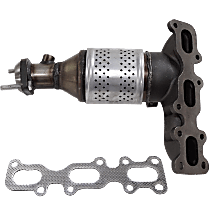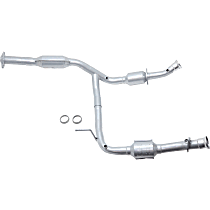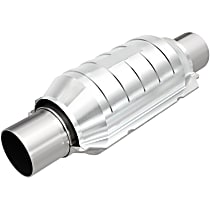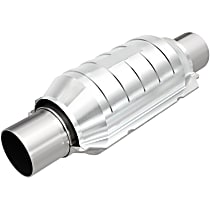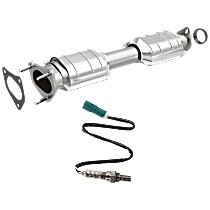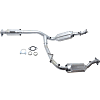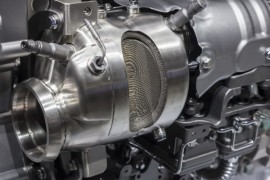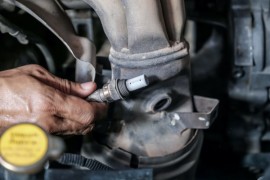{
"lazyNodes": false,
"abFitnotesFlag": false,
"abCrawlReviews": true,
"productOptionsCookie": false,
"orderDelayFlag": false,
"skipSessionCookie": false,
"covidMessage": false,
"fullTitleCookie": false,
"nrLoggerCookie": true,
"checkoutReviewCookie": false,
"productOptionSeqCookie": false,
"maintenanceFlag": false,
"bufferETACookie": false,
"multiShippingDiscountFlag": false,
"newFitmentFlag": false,
"surveyOptInFlag": true,
"crossSellFlag": false,
"skuMappingFlag": false,
"paySplitCookie": false,
"callDisableFlag": true,
"zipPaymentFlag": "c",
"hassleFreeReturn": true,
"lifetimeReplacement": true,
"cpn_off": false
}Ford Explorer Catalytic Converters
Shop Catalog
![]() WARNING: This product can expose you to chemical which is known to the State of California to cause cancer and birth defects or other reproductive harm. For more information go to www.P65Warnings.ca.gov.
WARNING: This product can expose you to chemical which is known to the State of California to cause cancer and birth defects or other reproductive harm. For more information go to www.P65Warnings.ca.gov.
![]() WARNING: This product can expose you to chemical which is known to the State of California to cause cancer and birth defects or other reproductive harm. For more information go to www.P65Warnings.ca.gov.
WARNING: This product can expose you to chemical which is known to the State of California to cause cancer and birth defects or other reproductive harm. For more information go to www.P65Warnings.ca.gov.
![]() WARNING: This product can expose you to chemical which is known to the State of California to cause cancer and birth defects or other reproductive harm. For more information go to www.P65Warnings.ca.gov.
WARNING: This product can expose you to chemical which is known to the State of California to cause cancer and birth defects or other reproductive harm. For more information go to www.P65Warnings.ca.gov.
![]() WARNING: This product can expose you to chemical which is known to the State of California to cause cancer and birth defects or other reproductive harm. For more information go to www.P65Warnings.ca.gov.
WARNING: This product can expose you to chemical which is known to the State of California to cause cancer and birth defects or other reproductive harm. For more information go to www.P65Warnings.ca.gov.
![]() WARNING: This product can expose you to chemical which is known to the State of California to cause cancer and birth defects or other reproductive harm. For more information go to www.P65Warnings.ca.gov.
WARNING: This product can expose you to chemical which is known to the State of California to cause cancer and birth defects or other reproductive harm. For more information go to www.P65Warnings.ca.gov.
![]() WARNING: This product can expose you to chemical which is known to the State of California to cause cancer and birth defects or other reproductive harm. For more information go to www.P65Warnings.ca.gov.
WARNING: This product can expose you to chemical which is known to the State of California to cause cancer and birth defects or other reproductive harm. For more information go to www.P65Warnings.ca.gov.
![]() WARNING: This product can expose you to chemical which is known to the State of California to cause cancer and birth defects or other reproductive harm. For more information go to www.P65Warnings.ca.gov.
WARNING: This product can expose you to chemical which is known to the State of California to cause cancer and birth defects or other reproductive harm. For more information go to www.P65Warnings.ca.gov.
![]() WARNING: This product can expose you to chemical which is known to the State of California to cause cancer and birth defects or other reproductive harm. For more information go to www.P65Warnings.ca.gov.
WARNING: This product can expose you to chemical which is known to the State of California to cause cancer and birth defects or other reproductive harm. For more information go to www.P65Warnings.ca.gov.
![]() WARNING: This product can expose you to chemical which is known to the State of California to cause cancer and birth defects or other reproductive harm. For more information go to www.P65Warnings.ca.gov.
WARNING: This product can expose you to chemical which is known to the State of California to cause cancer and birth defects or other reproductive harm. For more information go to www.P65Warnings.ca.gov.
![]() WARNING: This product can expose you to chemical which is known to the State of California to cause cancer and birth defects or other reproductive harm. For more information go to www.P65Warnings.ca.gov.
WARNING: This product can expose you to chemical which is known to the State of California to cause cancer and birth defects or other reproductive harm. For more information go to www.P65Warnings.ca.gov.
![]() WARNING: This product can expose you to chemical which is known to the State of California to cause cancer and birth defects or other reproductive harm. For more information go to www.P65Warnings.ca.gov.
WARNING: This product can expose you to chemical which is known to the State of California to cause cancer and birth defects or other reproductive harm. For more information go to www.P65Warnings.ca.gov.
![]() WARNING: This product can expose you to chemical which is known to the State of California to cause cancer and birth defects or other reproductive harm. For more information go to www.P65Warnings.ca.gov.
WARNING: This product can expose you to chemical which is known to the State of California to cause cancer and birth defects or other reproductive harm. For more information go to www.P65Warnings.ca.gov.
![]() WARNING: This product can expose you to chemical which is known to the State of California to cause cancer and birth defects or other reproductive harm. For more information go to www.P65Warnings.ca.gov.
WARNING: This product can expose you to chemical which is known to the State of California to cause cancer and birth defects or other reproductive harm. For more information go to www.P65Warnings.ca.gov.
![]() WARNING: This product can expose you to chemical which is known to the State of California to cause cancer and birth defects or other reproductive harm. For more information go to www.P65Warnings.ca.gov.
WARNING: This product can expose you to chemical which is known to the State of California to cause cancer and birth defects or other reproductive harm. For more information go to www.P65Warnings.ca.gov.
![]() WARNING: This product can expose you to chemical which is known to the State of California to cause cancer and birth defects or other reproductive harm. For more information go to www.P65Warnings.ca.gov.
WARNING: This product can expose you to chemical which is known to the State of California to cause cancer and birth defects or other reproductive harm. For more information go to www.P65Warnings.ca.gov.
Top Rated Products
Product Questions & Answers
Customer Guides
A Few Tips to Safeguard Your Ford Explorer Catalytic Converter
If you're thinking that you're not contributing to air pollution, think again. The emissions produced by your vehicle add up to the harmful gases that contaminate our environment. Good thing, the catalytic converter exists. It's the one responsible for reducing the harmful emissions in your car so that it becomes less toxic when released into the air.
To avoid frequent replacement, you need to take care of your Ford Explorer catalytic converter by doing the following maintenance tips:
- Keep the engine and fuel systems in good condition.
The best way to prolong the lifespan of the catcon is to make sure that it will work only at the right temperature. Allowing it to operate at high temperature for extended periods can cause the catcon's substrate to melt down and become a solid mass, causing your Explorer to give a sluggish performance. This occurs when rich fuel mixture reaches the converter, so if you don't want this to happen to your cat con, make sure that your engine and fuel systems are kept in good shape.
- Deal with ignition problems at once.
You may not know it, but some problems with your Explorer's ignition can drive raw fuel into the catalytic converter, causing it to get red hot. So if you think you're having fouled spark plugs, improper ignition timing, or faulty air pump, have the problem fixed right away so it won't cause unburned fuel to pass through the engine and reach the converter.
- Do a regular cat con inspection.
If it's possible for you to check on the catalytic converter regularly, do so. Just remember that this is no easy task as you have to securely raise your vehicle for you to fully access the exhaust system. Once you notice that the cat con is no longer in good shape, it's best to bring your car to a nearby auto repair shop to have it examined. The catalytic converter can be cleaned and reused if it's still in good condition. But if it's already busted, make sure that you replace your cat con as soon as you can, as this can cause you to fail an emissions test.
Do you feel that your fuel efficiency has suddenly plunged? Have you checked your car's fuel and exhaust systems recently? If not, then this might be a good time for you to do so. Get under your vehicle and inspect your Ford Explorer catalytic converter. If you discover that it's busted already, then this might be the root cause of your poor fuel mileage. When this happens and you have no choice but to replace the catcon, here are some tips on how to ease up the installation procedure:
Tip #1: Apply grease or lube to undo connections easier.
Always make it a point to use jacks and jack stands when performing repairs and replacements of components like the catalytic converter. Since the cat con is located underneath your car, you would need adequate moving space to perform the installation. Get some lube and spray it on the bolts that connect the cat con to your vehicle. This will help loosen up the attachment, making it easier for you to remove the old unit. Exercise proper caution when uninstalling the old cat con to avoid damaging the other nearby parts. If you're not that familiar with the exhaust system, then you can opt to bring your car to an expert mechanic for professional help.
Tip #2: Allow the exhaust to release heat before touching it.
If you have been driving your car prior to your Ford Explorer catalytic converter installation, it pays to let the exhaust system cool down first before performing any step of the installation process. Turn the engine off and wait for a few minutes until the exhaust becomes safe to touch and the cat con has cooled enough as well.
Tip #3: Destroy the old cat con if it's stuck.
If you feel that removing the existing busted cat con is next to impossible because it got stuck, then you may choose to break it instead. Use a hammer to break it off from the exhaust system, but make sure that you do this carefully to avoid damaging the other components of the exhaust. Apply just enough pressure as you strike the catalytic converter with the hammer. Evaluate its attachment, as some cat cons can be quickly removed with just the first jolt, while other converters require a number of strikes.
What is the average working temperature of Ford Explorer catalytic converters?
The ideal temperature at which Ford Explorer catalytic converters operate is at 1,200 to 1,600 degrees Fahrenheit. When the temperature inside the cat converter goes beyond this point due to an increase in the amount of pollutants, for instance to 2,000 degrees, the internal structure of the converter will eventually melt. The melted platinum, rhodium, and palladium components of the internal converter will damage the ceramic substrate. This will result to a diminished converting efficiency or total catalytic converter breakdown.
Can faulty spark plugs cause problems to the Ford Explorer's catalytic converter?
Yes. One of the leading causes of catalytic converter failure in most Ford Explorers is damaged spark plugs. When spark plugs experience misfire or if they don't fire at all, the exhaust system is invaded by unburned fuel. Unburned fuel ignites as it enters the converter, resulting to total ceramic catalyst meltdown.
Do all Ford Explorer models have the same number of catalytic converters?
No. The number of catalytic converters varies from one Ford Explorer model to another. This is usually determined by the engine used by the vehicle. Most Ford Explorers have V6 and V8 engines. V6 engines require two catalytic converters, while V8 engines require four.
Is it normal for the Ford Explorer's exhaust system or catalytic converter to smell like rotten eggs?
The smell of rotten eggs released by Ford Explorer exhaust systems is usually caused by a cold engine and a rich fuel condition. This can still be normal if the stench disappears after the engine warms up. But if the disgusting odor stays, the catalytic converter might be damaged.
What is the best type of catalytic converter for a Ford Explorer?
There are three types of catalytic converters sold in the online market today. These are the two-way, three-way, and the three-way + air catalytic converters. For Ford Explorer models with computerized fuel and emissions controls, the three-way cat converter is the best type. It actually works like the two-way catalyst but the reduction of oxides of nitrogen and the oxidation of hydrocarbons and carbon monoxide is done with a single catalyst. It also contains cerium, an oxygen storage element that boosts the catalyst process.

